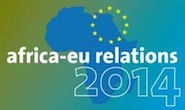+++ ECDPM Challenges blog series. Post number nine +++ 2014 is a year of institutional transition but it should not be a year for silent reflection on EU external action. The current leadership has an important role to play in maintaining momentum for the EEAS Review while leaving enough space for the 2014 intake to take ownership of the ongoing EEAS change processes. With three major international agreements to be signed in 2015, the High Representative and Vice-President will also need to excel in ensuring coherence of EU external policy with regards to sustainable ...
+++ ECDPM Challenges blog series. Post number eight +++ Institutional Changes The future role of Europe in the world, including Africa/ACP-Europe relations, will be seriously affected by the outcomes of next year’s European elections and related appointments at the top of EU institutions because they will shape EU’s foreign affairs for the rest of the decade. The current EU decision makers will negotiate the EU-Africa summit in April and post-2015 global development commitments, but the responsibility for implementation will fall to their successors. Will European diplomacy continue with a cautious President of the Commission ...
+++ ECDPM Challenges blog series. Post number two +++ The European Union’s Agenda for Change is a case of evolution over revolution. The EU’s new development policy sketches an aid-centric reform strategy that introduces significant changes for the European aid and development cooperation landscape in 2014-2020. With Europe in crisis and aid under pressure, the EU wants to increase the effectiveness of its development assistance. What are the biggest implementation challenges, and how fit is the EU to do so? The year 2014 will close the circle from policy to programming to practice. The EU’s aid ...
Visibility, everyone wants it, but how well are they achieving it? The EU is consistently criticised for low visibility on its external action, and now the European Parliament is calling for the issue to be dealt with in the on-going Review of the European External Action Service. This blog asks: what has actually been learned from efforts to promote EU visibility in external action? Surprisingly in 2010 the European Commission tasked what was formerly the Joint Evaluation Unit for External Relations to provide an answer to this very question.. ECDPM, along with DRN, led the ...
Staffing issues are all the talk in Brussels at the moment amid heated discussions over the next EU budget. EU Member States want the European Commission (EC) to reduce its staff by more than 5 % over the next 5 years, more than Council President van Rompuy recently proposed. In particular, Member State officials have made critical observations about the size of the Directorate-General for Development and Cooperation – EuropeAid (DG DEVCO). Counting 6.5% of the EC’s Brussels-based staff, it is the second largest of the EC’s offices in Brussels. However, DEVCO staff manages relatively ...
Andrew Sherriff co-authored this article. As EU budget negotiations are moving to the concluding phase (Figure 1), the ultimate outcome for development and EU external action spending is still unknown. Clarity on key questions, such as an indication of the amount of development funding available, remain clouded by the impasse and posturing in the wider negotiations. The Cyprus EU Presidency, in its role as “honest broker”, is currently lowering expectations, by saying that if agreement cannot be found on the overall level of the EU budget then all elements inside and outside the budget “will ...
For some, this was very poor timing or even a joke. For others the prestigious Nobel Peace Prize could not come at a better moment, now that the EU is confronting the deepest economic and financial crisis in its history. Never in the past the European project has been so unpopular amongst its citizens. Some EU member states seem to be more out than in the EU. In spite of the Lisbon Treaty - meant to reinforce the Union’s cohesion and strengthen its standing in foreign relations - Europe is losing ground in the world. ...
A recent evaluation on the Visibility of EU External Action carried out by ECDPM and the Development Researchers Network concluded that since the reorganization of the EU external action services post-Lisbon a lack of clear direction and leadership on visibility issues has hampered the projection of a strong EU image in international affairs. The evaluation, commissioned two years ago by the European Commission’s former External Relations (Relex) Group of DGs, was concluded in June 2012 and the report presented to EU officials at a seminar on 7 September. During the course of this global evaluation the ...
For those concerned with development and Africa, the three big questions during the EU budget negotiations are: “how much money is going to be available?”, “what is it going to be for?” and “which countries are going to get it?”. One year has passed since the EU institutions started the cycle of negotiations for its next multiannual financial framework (MFF) covering the period 2014-2020. A key round of talks took place last week. Negotiations between Member States’ ministers are mostly centred on the “big ticket items” of spending inside the EU – Cohesion Policy and ...
Organisational charts in general can’t tell you much about what happens behind the scenes in a company or an institution. They don’t show who is in or out of favour, they don’t map influence and informal lines of communication dictating priorities. However, when looking at previous versions and updates, they help to understand how an organisation is evolving, or at least the formal thinking about how it should. Last week the EEAS published a new version of its organisational chart (dated 1st of May 2012), displaying its internal structure and stating the names of key ...

















